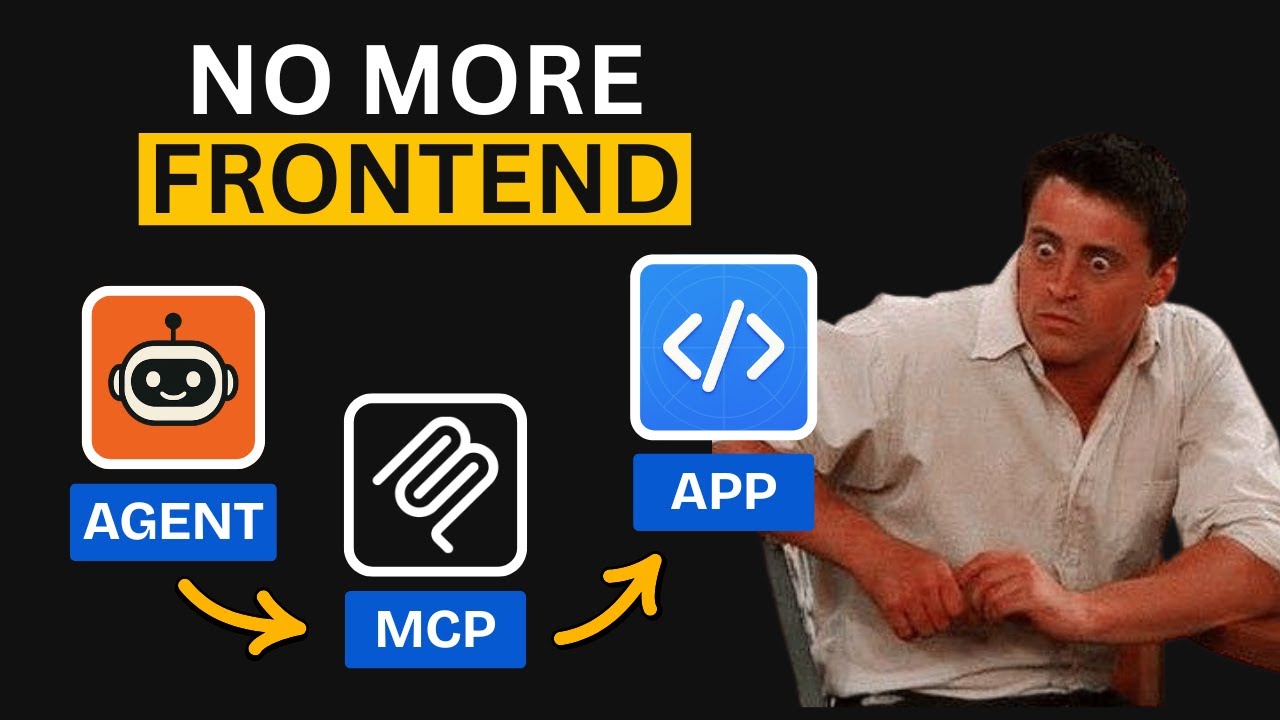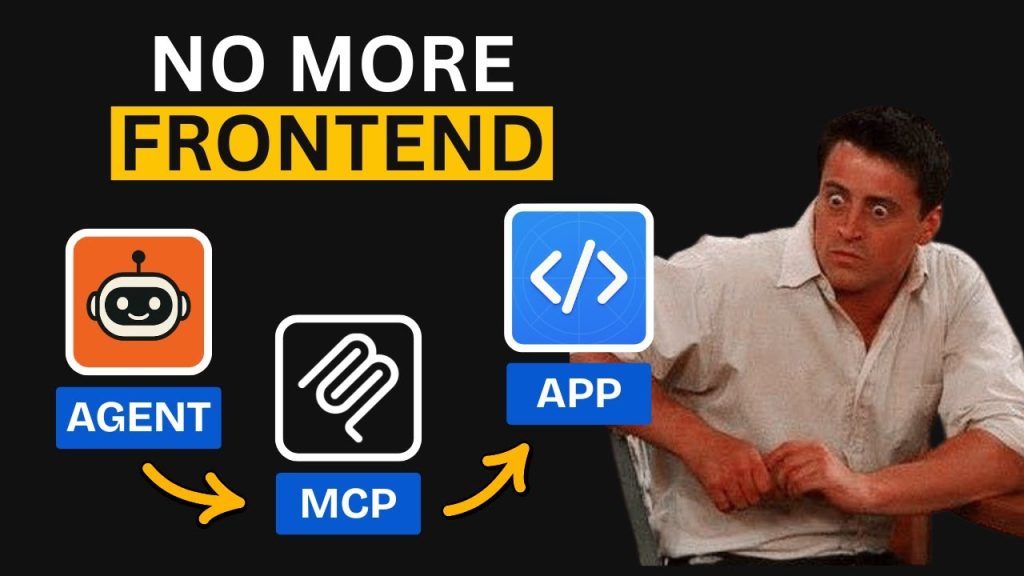Based on a tutorial by AI LABS
If you’ve been wondering how the future of app development will look, you’re not alone. The era of clicking through menus and dragging sliders is rapidly ending, and we’re moving toward a world where every application will be controlled through simple conversations with AI agents.
Today, I’m breaking down an incredible tutorial that shows you exactly how to make this future real using Fast API MCP Server. This technology transforms every API in your app into ready-made tools that AI agents can control on command. No more buttons, no more dashboards – just natural conversation controlling your entire application.

Quick Navigation
- The Future of App Control (00:00-01:30)
- Setting Up Your Fast API Application (01:31-04:15)
- Installing Fast API MCP Server (04:16-06:45)
- Naming Your MCP Tools (06:46-08:20)
- Troubleshooting Setup Issues (08:21-09:30)
- Using MCP with Different Clients (09:31-12:00)
- Building Full Agentic Applications (12:01-15:30)
The Future of App Control
The tutorial starts with a bold prediction: we’re witnessing the end of traditional user interfaces. Soon, every application will be driven by a single conversation with an AI agent, and this includes the applications you build yourself.
Key Points:
- Traditional UI elements (buttons, dashboards, menus) are becoming obsolete
- Fast API MCP Server acts as the bridge between your APIs and AI agents
- Every API endpoint becomes a ready-made tool for LLM control
- Any project or app can integrate with this system
My Take:
This isn’t just theoretical – it’s happening now. If you’re building applications today, you need to start thinking about how AI agents will interact with them tomorrow. This tutorial gives you the practical steps to get ahead of this trend.
Setting Up Your Fast API Application
Before integrating MCP, you need a working Fast API application. The tutorial uses a to-do list app as an example because it’s simple to build, letting you focus on the important MCP integration part.
Setup Requirements:
- A front-end application (Next.js in this example)
- A backend powered by Fast API
- Python virtual environment
- Proper project folder structure
Development Steps:
- Create a new folder and open it in Cursor
- Set up Python virtual environment
- Build the Next.js frontend with API exposure
- Create Fast API backend with endpoints
- Ensure both frontend and backend work together
My Take:
While a to-do app might seem basic, it’s the perfect starting point. Once you understand how MCP works with simple CRUD operations, you can apply the same principles to much more complex applications like e-commerce platforms or social media apps.
Installing Fast API MCP Server
With your Fast API app running, the next step is installing and implementing the MCP server. This is where the magic happens – your regular API endpoints become AI-controllable tools.
Installation Process:
- Navigate to the Fast API MCP GitHub repository
- Install the package using pip or UV in your virtual environment
- Copy the basic usage example from the repo
- Integrate the MCP server code into your main file
# Install Fast API MCP package
pip install fastapi-mcp
# Make sure your virtual environment is active
# You'll see the environment name in your terminal
My Take:
The beauty of this approach is that you don’t need to write complex integration code from scratch. The MCP server handles all the heavy lifting of converting your APIs into tools that AI agents can understand and use.
Naming Your MCP Tools
One crucial aspect not covered in basic examples is naming your tools properly. MCP servers create tools that AI models use to control your application, and you want these tools to have clear, descriptive names.
Tool Naming Best Practices:
- Use the operation_id tag when defining Fast API endpoints
- Set meaningful names that describe the tool’s purpose
- Avoid auto-generated names for better control
- Make names intuitive for AI agents to understand
# Example of naming tools with operation_id
@app.post("/tasks", operation_id="create_task")
async def create_task(task: TaskCreate):
# Your endpoint logic here
pass
@app.delete("/tasks/{task_id}", operation_id="delete_task")
async def delete_task(task_id: int):
# Your endpoint logic here
pass
My Take:
Don’t skip this step! Clear tool names make a huge difference in how effectively AI agents can interact with your application. Think of it as creating a vocabulary that the AI can use to “talk” to your app.
Troubleshooting Setup Issues
Even following the documentation perfectly, you might run into issues where tools don’t appear. The tutorial covers a common problem and its solution that many developers encounter.
Common Issue:
- Tools not showing up even after proper naming
- MCP server appears to be broken but isn’t
- Missing registration step causes tools to be invisible
The Fix:
- Set up the MCP server AFTER all endpoints are declared
- Add a reregistration function call at the end of your main file
- This ensures all tools are properly registered and visible
My Take:
This is one of those “gotcha” moments that can derail your progress. The order of operations matters in MCP setup, so always declare your endpoints first, then set up the MCP server. It’s a small detail with big consequences.
Using MCP with Different Clients
Once your MCP server is set up, you can connect it to various MCP clients like Cursor, Windsurf, or Claude Desktop. The process is straightforward and opens up immediate AI control of your application.
Connection Steps:
- Run your Fast API backend to get the local URL
- Copy the URL and add “/mcp” at the end
- Add this as a global MCP server in your client’s configuration
- Your app becomes immediately controllable by AI agents
// Example MCP configuration
{
"mcpServers": {
"fastapi-todo": {
"command": "python",
"args": ["-m", "fastapi_mcp"],
"env": {
"FASTAPI_URL": "http://localhost:8000/mcp"
}
}
}
}
Demo Results:
- AI agents can create, modify, and delete tasks in real-time
- Complex multi-step operations work seamlessly
- No traditional UI interaction required
- Natural language controls the entire application
My Take:
The moment you see an AI agent controlling your app through conversation is genuinely mind-blowing. It’s not just a technical achievement – it’s a preview of how we’ll interact with software in the very near future.
Building Full Agentic Applications
While using MCP with existing clients is impressive, the real power comes from building fully autonomous AI applications using frameworks that can integrate MCP servers directly.
MCPUs Framework Benefits:
- Direct integration with MCP servers in your AI agents
- Full client library for building MCP-enabled applications
- Automatic interaction with server tools
- Complete conversation-driven app control
Real-World Applications:
- Social media platforms controlled by conversation
- E-commerce sites managed through natural language
- Complex business applications with AI interfaces
- Any custom app you build can become AI-controlled
# Example agent configuration
{
"mcp_server": "http://localhost:8000/mcp",
"agent_config": {
"model": "gpt-4",
"tools": ["create_task", "delete_task", "update_task"],
"conversation_mode": true
}
}
My Take:
This is where we’re heading – applications that understand context, remember conversations, and execute complex workflows through simple dialogue. Imagine telling your project management app “prepare the Q4 report with last month’s metrics” and watching it happen automatically.




